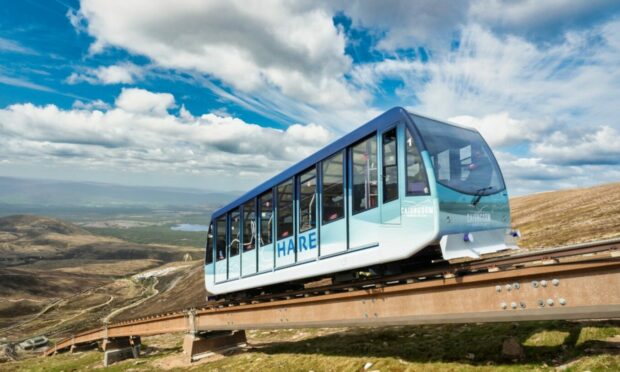The operators of the Cairngorm Funicular have been paid £11 million compensation.
Highlands and Islands Enterprise (HIE) took action against three bodies over the design and construction of the funicular.
It relates to the original design and construction of the railway in the 1990s and early 2000s – and guarantees in place with the previous operator.
It comes after the mountain railway – a huge draw for tourists – was withdrawn in September 2018 by then-operator CairnGorm Mountain Ltd (CML) after an inspection raised safety concerns.
The UK’s highest railway was closed to the public for more than 1,500 days.
Now an out-of-court settlement has been agreed.
HIE ‘pleased’ to recover public funding
HIE had been pursuing construction company Galliford Try Infrastructure Ltd and designer AF Cruden Associates Ltd, as well as Natural Assets Investments Ltd (Nail), the parent company of CML.
Under the terms of the settlement, HIE is receiving a total sum of £11m.
Built at a cost of £19.5m, Scotland’s only funicular railway opened in 2001 at a cost of £26.5m.
Construction was publicly funded through HIE, with support from the European Regional Development Fund.
In December 2018, HIE took over operations through a new subsidiary, Cairngorm Mountain (Scotland) Ltd, which continues to manage the resort at present.
The funicular returned to service in January this year, following a four-year programme of inspection, design and engineering works at a cost of around £25m.
The attraction takes skiers, boarders, mountain bikers and hikers to the upper slopes of Cairngorm Mountain.
Stuart Black, chief executive of HIE, said: “We are pleased to have reached this settlement, which enables us to recover a significant amount of public funding and brings closure to these long-standing matters.”
Completion of ‘one of Scotland’s most complex and challenging civil engineering projects of recent years’
The final repair bill is set to be a staggering £9m more than originally predicted – and around the same price as the funicular cost when it was first built.
Described as “one of Scotland’s most complex and challenging civil engineering projects of recent years”, the Scottish Government provided £16m towards the £25m cost of fixing the railway.
The 1.8-mile railway connects a base station with a restaurant and a ski area 1,097m (3,599ft) up Cairngorm mountain.
Repairs and strengthening work started in April 2021 but the Covid pandemic, a shortage of materials and bad weather led to rising costs of the work, and delayed an earlier reopening.
The complex civil engineering project involved thousands of lifts by helicopter to deliver 800 tonnes of concrete to the site. Bearings and other components were also replaced.
Engineers had to avoid causing damage to deep peat and boulders removed to allow access to the railway were put back in place with their lichen-covered surfaces the right way up.
Tests on the railway and a safety certificate from the UK Department of Transport were required before it could be made available to the public.
Before it was closed, the funicular’s operators estimated that it carried about 300,000 visitors each year.
Engineers batted winds and midges to complete repairs
Ken Brown, of engineering firm Balfour Beatty, said dozens of workers with different skills did a “fantastic job” in a challenging environment in re-instating the railway near Aviemore.
He said winds in October gusted to 106mph, and when it was not windy the engineers had to contend with swarms of biting midges
In 2019, the estimated cost of the repairs were £10m
HIE said at the time it was cheaper to fix the funicular than dismantle it.
Removing or fixing the railway is complicated because it will have to be done in a way that minimises impact on Cairngorm mountain – a 1,245m (4,084ft) Munro and one of Scotland’s best known summits.
During the construction of the railway, a helicopter was used to deliver building materials to the mountainside.
There has been criticism of the repairs.
In 2021, mountaineer and author Cameron McNeish, who opposed the plans for the funicular before it was opened in 2001, said the railway should be “stripped” from the mountainside and the area allowed to go back to the wild.
Environmental restoration works, including replanting and re-seeding, will proceed during 2023 and beyond.
The ski area can experience freezing temperatures any time of the year and, according to the Met Office, is the snowiest place in the UK with snow falling 76 days a year on average.


